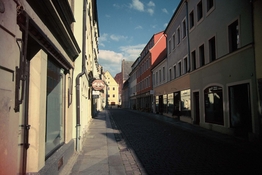Hello,
I am new to color development (and home development in general) and got my hands on a roll of Fujifilm Velvia 50 (expired in mid 2019). I home-processed them using Tetenal's E-6 Kit. However, I feel that my slides have come out too dark. I see my images when I hold my film against the light, and film leader is fully transparent, but a tiny little bit magenta (so maybe not a first-dev issue). The edges are all black and apparently solid. I have never developed slide film or even color film before so I am unsure what went wrong or if the results are supposed to look like that. I posted some pictures for you so you can see what happened.
The pictures are crappy because I didn't have anything at my hand that could have made for higher quality. I hope the important things are still visible.
Anyway, I hope that you can help me and have a nice Sunday evening!







I am new to color development (and home development in general) and got my hands on a roll of Fujifilm Velvia 50 (expired in mid 2019). I home-processed them using Tetenal's E-6 Kit. However, I feel that my slides have come out too dark. I see my images when I hold my film against the light, and film leader is fully transparent, but a tiny little bit magenta (so maybe not a first-dev issue). The edges are all black and apparently solid. I have never developed slide film or even color film before so I am unsure what went wrong or if the results are supposed to look like that. I posted some pictures for you so you can see what happened.
The pictures are crappy because I didn't have anything at my hand that could have made for higher quality. I hope the important things are still visible.
Anyway, I hope that you can help me and have a nice Sunday evening!









 But i then found it more convenient to combine the Cinestill with the Jobo. But as i said, i also used the Cinestill with manual agitation during my first tries.
But i then found it more convenient to combine the Cinestill with the Jobo. But as i said, i also used the Cinestill with manual agitation during my first tries.







